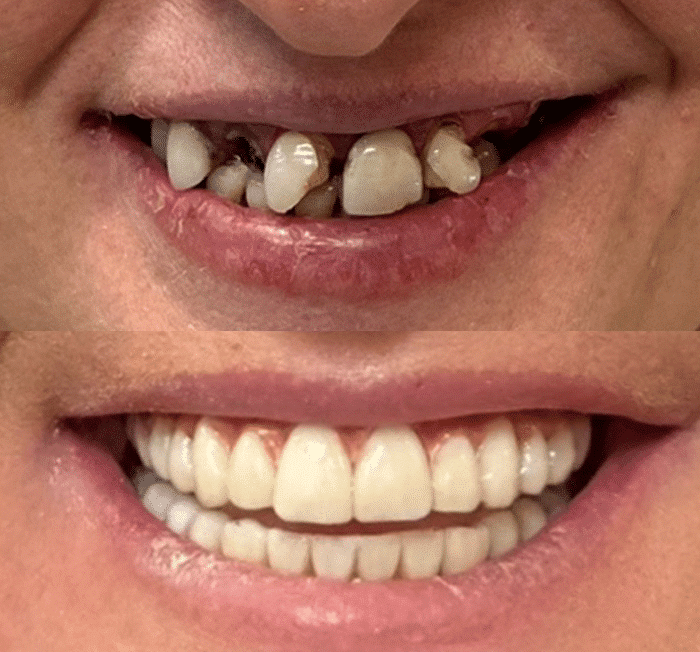Did you know that tooth decay is one of the most common health problems that plague Americans? In fact, the only health issue that surpasses it is the common cold.
One of the primary reasons individuals develop tooth decay is poor oral hygiene. However, genetics, injuries, and illnesses can also contribute to tooth decay. When you start experiencing pain and discomfort, you may wonder if you need a root canal procedure.
To help you prepare for a root canal, we have a must-read guide you won’t want to miss out on. During a root canal process, there are four steps that you can expect at most dental clinics. Keep reading on until the end and find out more helpful tidbits on how to get started today!
What Is a Root Canal?
The root canal is a soft tissue or pulp found inside teeth. Beneath the hard enamel layers, root canals contain several blood vessels, nerves, and other tissues.
The primary purpose of the root canal is to support the growth and structure of your teeth. Without proper nourishment and support, the root canal can cause tooth decay or poor nourishment. As you can imagine, the root canal process in dental care helps remove any infected portions to help prevent further tooth damage.
Root Canal Procedure
A root canal dental treatment is an endodontic procedure targeting an infected tooth. Once your trusted dentist in Monument, Colorado, has located the infected tooth and root canal, the procedure can be broken down into can be broken down into four simple steps:
- Isolate the infected tooth
- Drill into the opening of the tooth to clean the infected pulp
- Fill root canal
- Restore tooth (e.g., crown)
If a root canal fails from deeper decay or further damage, you may need an implant. Finding a dental surgery clinic specializing in cosmetics, implants, and other endodontic procedures helps you avoid costly specialists and visits to multiple clinics.
1. Isolating Infected Tooth
Dental dams are often used to isolate the problematic tooth. Your dentist will also use a local anesthetic to avoid discomfort during the procedure. While infected root canals can be very painful, the procedure itself should be relatively pain-free, with some discomfort afterward.
2. Clean Infected Pulp
A qualified dentist drills a hole through the tooth and into the pulp, where they can begin to clean the area and shape the inside for future fillings. This step is critical since it requires careful precision to ensure complete removal and adequate shaping for dental materials. X-rays or other imaging devices may be used to assist the dentist.
3. Filling Your Root Canal
Dental materials help fill the cleaned space where your root canal was. These materials are safe and permanent and should last you for several years to come.
However, with wear and tear, some fillings may crack or break. In these scenarios, you would need a dental restoration procedure.
4. Dental Crown Placement
The last component of a root canal procedure is placing a dental crown. Dental crowns are a cap that covers damaged teeth and reinforces fillings.
While fillings are meant to be permanent, dental crowns usually last up to 15 years. The durability of your crown depends on the materials you choose and oral care.
Typically, there is a waiting period between the filling and crown placement. Your dentist will likely use a temporary filling while you heal, and a follow-up procedure will replace it with the permanent filling and crown of your choosing.
Is a Root Canal Procedure Emergent?
Some patients wonder if a root canal procedure is an emergency. Extreme pain or visible pulp can constitute an emergency, and having a dental clinic specializing in emergency dentistry or same-day procedures can give you peace of mind.
Other times, root canal issues are not emergent but may cause lingering pain, discomfort, or difficulty chewing. Your dentist may perform an exam and use imaging to determine whether the pulp is salvageable. Significant decay, cavities, or cracked teeth might warrant a root canal procedure.
Root Canal Procedure vs. Implant
Root canals are more cost-friendly and help save your original tooth. For many, it solves the discomfort and pain.
For others, an extraction might be recommended for severe damage or disease. Additionally, if a root canal has not solved your discomfort or pain, an implant is the next step.
Many experts found that endodontic treatments like root canal procedures can significantly improve the functionality of your tooth and have excellent success rates. Another reason is it can save you thousands in extraction and implant costs.
Root canals typically cost in the hundreds up to $1,600. Contrarily, extractions and implants can tally as much as $10,000 in some cases. While insurance coverage and the extent of the damage play a factor, it is worthwhile to look into a root canal first.
One way you can avoid extractions and implants is by following your dentist’s instructions after a root canal, following daily oral hygiene recommendations, and scheduling regular visits with your dentist in Monument, Colorado.
Schedule Your Root Canal Procedure
Have you wondered if a root canal procedure is right for you? Ultimately, a skilled dentist will help you determine which endodontic procedure will give you the best results (and smile). This common dental treatment targets your painful and infected tooth, helping you avoid complete decay and tooth extractions.
In Monument, Colorado, our team of dentists are highly experienced in several dental care procedures, including root canals. To get started, contact us today and schedule an appointment to find out if you need a root canal!









